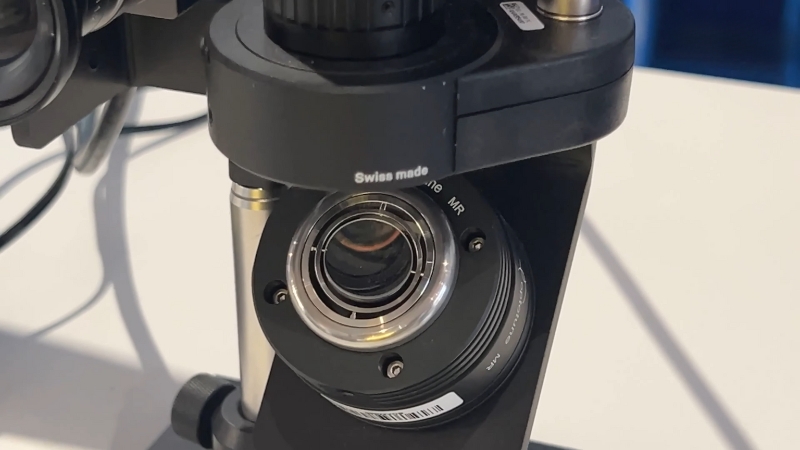Cataract surgery is a transformative medical procedure designed to restore clear vision by removing the clouded lens of the eye and replacing it with an artificial intraocular lens (IOL).
It is a highly effective solution for individuals experiencing significant vision impairment due to cataracts. The procedure is among the most commonly performed surgeries globally, reflecting its effectiveness and safety.
The Cataract Surgery Procedure
Cataract surgery is a straightforward and highly effective procedure, designed to restore vision by replacing the clouded natural lens with an artificial intraocular lens (IOL).
The entire process involves careful planning, precision during surgery, and advanced technology.
Pre-Operative Preparations
Preparation begins with a thorough eye examination conducted by an ophthalmologist to evaluate the extent of the cataract and overall eye health.
Additional steps include:
- Measurement for IOL: Accurate measurements of the eye are taken to determine the correct power and type of IOL needed.
- Medical History Discussion: Patients provide details of their medical history, including any medications, allergies, or previous surgeries, to minimize risks.
Pre-Surgery Instructions
Patients may be advised to stop taking certain medications, such as blood thinners, to reduce the risk of bleeding.
Instructions for fasting before surgery are typically provided, often requiring patients to avoid food or drink for several hours.
The Surgical Procedure
The surgery is usually performed under local anesthesia to numb the eye, ensuring patient comfort throughout the procedure. Steps in the surgery include:
Types of IOLs
Patients can choose among several types of IOLs based on their vision requirements:
- Monofocal Lenses: Provide clear vision at a single distance (near or far).
- Multifocal Lenses: Offer correction for both near and far vision, reducing dependence on glasses.
- Toric Lenses: Correct astigmatism in addition to cataracts.
Recovery After Cataract Surgery
Recovery after cataract surgery is a crucial phase that requires careful adherence to post-operative instructions to ensure optimal healing and outcomes.
The process typically begins immediately after the procedure, with patients receiving detailed guidance on how to care for their eyes.
Patients are provided with a protective shield to cover the operated eye, preventing accidental rubbing or exposure to irritants. Wearing the shield, especially during sleep, is essential in the initial days to avoid unnecessary strain or injury.
Prescribed eye drops are vital in reducing inflammation, preventing infection, and promoting healing. Patients are usually instructed on how to apply these drops correctly and maintain a consistent schedule.
Rest is a key element during recovery. Strenuous activities, heavy lifting, and bending over should be avoided to minimize pressure on the eye. Activities such as swimming or exposure to dusty environments are also discouraged during the healing period.
Most patients notice improved vision within a few days, though it’s common for vision to remain slightly blurry as the eye adjusts to the new intraocular lens.
Mild side effects such as light sensitivity, dry eyes, or a sensation of grittiness may occur but typically resolve on their own.
Regular follow-ups are essential to monitor progress and detect any early signs of complications. During these visits, the ophthalmologist checks the eye’s healing, addresses any discomfort, and adjusts medications if needed.
Recovery doesn’t end with the immediate post-operative phase. Routine eye exams ensure the surgery’s success over time and help detect potential age-related changes or conditions early.
Risks and Complications

These can range from mild, temporary side effects to more serious issues in rare cases.
Common Risks:
- Infection: Though rare, infections can occur if proper hygiene and post-operative care are not maintained. Signs include redness, increased pain, or discharge.
- Swelling: Some patients experience swelling in the cornea or retina, which usually subsides with prescribed medications.
- Temporary Blurred Vision: Vision may remain blurry for a few days as the eye heals and adjusts to the new lens.
- Light Sensitivity: Patients may find bright lights uncomfortable during the recovery period.
Rare but Serious Complications:
- Retinal Detachment: A rare occurrence where the retina pulls away from the eye’s supportive tissue, requiring immediate medical attention.
- Vision Loss: In extremely uncommon cases, complications during or after surgery may lead to permanent vision loss.
- Glaucoma or Elevated Eye Pressure: Post-operative complications can sometimes cause increased intraocular pressure.
- Posterior Capsule Opacification (PCO): Months or years after surgery, some patients develop a clouding of the lens capsule, which can be corrected with a simple laser procedure.
Costs of Cataract Surgery
The overall cost of cataract surgery can vary widely depending on several factors, including the surgical method, type of intraocular lens (IOL) selected, and the facility where the procedure is performed.
Additional elements like pre-operative tests, anesthesia fees, and post-operative care can also influence the final amount.
On average, patients can expect the procedure to cost between $3,000 and $5,000 per eye in the United States. However, advanced IOLs, such as multifocal or toric lenses designed to address astigmatism, often come with a higher price tag.
These lenses are considered premium options and are typically not included in standard insurance coverage, requiring patients to pay out-of-pocket.
Additional expenses to consider include:
- Medications: Post-surgery eye drops to prevent infection or inflammation.
- Pre-operative consultations: Comprehensive eye examinations and tests.
- Follow-up appointments: Essential visits to monitor recovery progress.
- Specialized procedures: Costs may rise if laser-assisted surgery is chosen over traditional methods.
Patients are encouraged to request a detailed cost breakdown before committing to surgery.
Insurance Coverage for Cataract Surgery

Cataract surgery is typically covered by public health insurance programs like Medicare and private health insurance, like the one you can find here.
These insurance options typically cover the essential elements of the procedure, such as basic surgery and the use of a standard monofocal intraocular lens (IOL).
However, patients interested in advanced lens options or other premium upgrades, such as multifocal or toric lenses, may need to pay additional out-of-pocket expenses.
Key details to consider when evaluating insurance coverage include:
It’s crucial to confirm these amounts beforehand.
While basic lenses are generally covered, premium IOLs designed to correct astigmatism or provide better near and distance vision may not be included in standard coverage. These upgrades can significantly enhance vision outcomes but are an extra expense.
Coverage typically extends to initial consultations, necessary pre-surgery tests, and follow-up appointments. However, any additional services or tests may need verification with the insurance provider.
To avoid unexpected expenses, patients are encouraged to:
- Contact their insurance provider directly to confirm what aspects of the procedure are covered.
- Request a detailed breakdown of out-of-pocket costs, including those associated with premium lenses or additional services.
- Check if the surgical center offers assistance in navigating insurance claims or understanding policy details.
The Bottom Line
Cataract surgery offers a pathway to improved vision and quality of life. By consulting with an experienced ophthalmologist, patients can gain a clear perspective on their options and take the first step toward better eye health.
Related Posts:
- What to Expect When Meeting German Girls - A Local’s…
- Should You Opt for Full Coverage on Your First Home?…
- Who Pays Health Insurance While on Long-Term…
- How Long to Wear Eye Shield at Night After Cataract…
- 6 Disadvantages Of Cataract Surgery - Seeing Beyond Clarity
- How Long After Cataract Surgery Can You Drive: Eyes…














